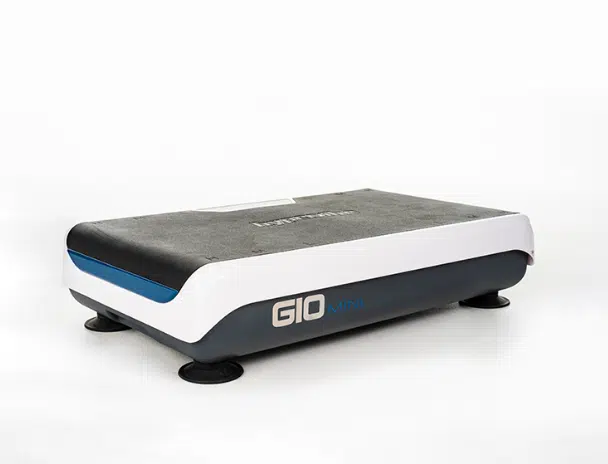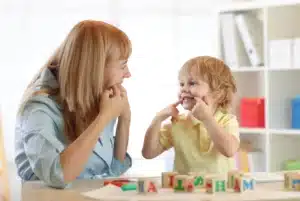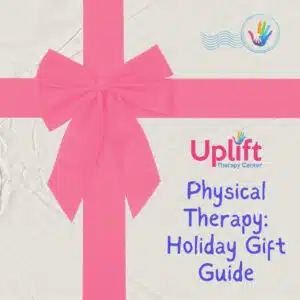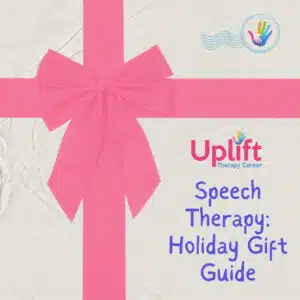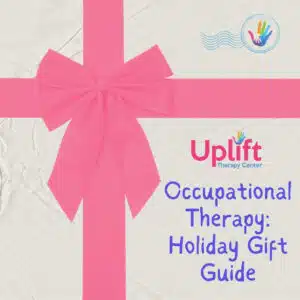By Nicole Crisan, PT, DPT
A vibration board uses whole body vibration that can be set to different frequencies depending on the child’s needs and goals. It can be used as an additional tool that can be integrated during a therapy session as it provides many benefits, ranging from improving balance, motor control, coordination mobility, and strength. Also, a vibration board has been researched and used in a variety of pediatric patient populations.
Benefits in Pediatric Therapy:
The applications of pediatric vibration boards in therapy are diverse and multifaceted, addressing a range of developmental areas:
- Balance: Research has shown improvements in balance. Whole-body vibration has the potential to help improve proprioception (sense that helps us perceive the location, movement, and action of body parts). It can “improve muscle power and balance…”.1,2, 9
- Gross motor control/coordination: Various studies have found that motor control was improved during whole body vibration. 3,6
- Mobility: There has been research showing that after whole body vibration, there were improvements in range of motion in lower limb joints, such as in the ankle and knee joints. Studies have found that after a short bout of whole-body vibration, spasticity (muscles that are stiff/rigid) has been shown to be reduced. Even gait mechanics have been shown to improve after whole-body vibration intervention as seen in children who toe walk. 5,6, 10
- Muscle Strength: Whole-body vibration helps to strengthen muscles by simulating rapid muscle contractions developing increased muscle power 2, 4,7,8
Whole-Body Vibration During Therapy Sessions:
One of the most important things when including something in a therapy session is making it fun! There are so many ideas and activities that can be done that can focus on and engage the child’s interests. Here are some of examples on how a vibration board can be used during therapy sessions:
- Child sitting on vibration board while completing a puzzle, playing with toys, or playing catching
- Child is tall kneeling on the vibration board while reaching for stickers or coloring
- Child is standing (on one or both feet) on the vibration board while playing catching with a balloon, throwing, playing hot potato, playing a fishing game
- Child stepping up and down from the board while in rhythm to music
- Squatting to pick up a ball and play basketball or hit colored targets
References:
- Ali, Mostafa S., et al. “The Effect of Two Therapeutic Interventions on Balance in Children with Spastic Cerebral Palsy: A Comparative Study.” Journal of Taibah University Medical Sciences, no. 4, Elsevier BV, Aug. 2019, pp. 350–56. Crossref, d oi:10.1016/j.jt umed .2019.05.005.
- El-Shamy, Shamekh Mohamed. “Effect of Whole-Body Vibration on Muscle Strength and Balance in Diplegic Cerebral Palsy.” American Journal of Physical Medicine & Rehabilitation, no. 2, Ovid Technologies (Wolters Kluwer Health), Feb. 2014, pp. 114–21. Crossref, doi:10.1097/phm.0b013e3182a541a4.
- Duquette, Sean, et al. “Whole Body Vibration and Cerebral Palsy: A Systematic Review.” The Journal of the Canadian Chiropractic Association , 2015.
- Gusso, Silmara, et al. “Effects of Whole-Body Vibration Training on Physical Function, Bone and Muscle Mass in Adolescents and Young Adults with Cerebral Palsy.” Scientific Reports, no. 1, Springer Science and Business Media LLC, Mar. 2016. Crossref, doi:10.1038/srep22518.
- Park, Chunung, et al. “Correction: Immediate Effect of a Single Session of Whole Body Vibration on Spasticity in Children With Cerebral Palsy.” Annals of Rehabilitation Medicine, no. 4, Korean Academy of Rehabilitation Medicine, 2017, p. 722. Crossref,
d oi:10.5535/arm.2017.41.4.722. - Ritzmann, Ramona, et al. “Vibration Therapy in Patients with Cerebral Palsy: A Systematic Review.” Neuropsychiatric Disease and Treatment, Informa UK Limited, June 2018, pp. 1607–25. Crossref, doi:10.2147/ndt.s152543.
- Saquetto, M. B., et al. “Effects of Whole-Body Vibration on Muscle Strength, Bone Mineral Content and Density, and Balance and Body Composition of Children and Adolescents with Down Syndrome: A Systematic Review.” Osteoporosis International, no. 3, Springer Science and Business Media LLC, Jan. 2018, pp. 527–33. Crossref, doi:10.1007/s00198-017-4360-1.
- Stark, C., et al. “Effect of a New Physiotherapy Concept on Bone Mineral Density, Muscle Force, and Gross Motor Function in Children with Bilateral Cerebral Palsy.” J Musculoskeletal Neuronal Interact. , 2010.
- Villarroya, M. Adoración, et al. “Effects of Whole Body Vibration Training on Balance in Adolescents with and without Down Syndrome.” Research in Developmental Disabilities, no. 10, Elsevier BV, Oct. 2013, pp. 3057–65. Crossref,d oi:10.1016/j.rid d .2013.06.015.
- Williams, Cylie M., et al. “Whole-Body Vibration Results in Short-Term Improvement in the Gait of Children With Idiopathic Toe Walking.” Journal of Child Neurology, no. 9, SAGE Publications, Apr. 2016, pp. 1143–49. Crossref, doi:10.1177/0883073816643405.
